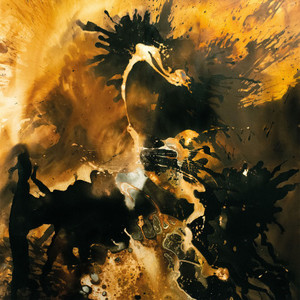Фильтры
Носители
Цена
Музыка и песни OBERLAND, FREDERIC D. AND IRENA Z. TOMAZ / OBERLAND, FREDERIC D. AND IRENA Z. TOMAZ
Под заказ
Артикул: CDVP 3725183
EAN: 0602343041605
Состав: LP
Состояние: Новое. Заводская упаковка.
Дата релиза: 26-06-2020
Лейбл: Hallow Ground
Жанры: Experimental
Frédéric D. Oberland and Irena Z. Tomažin's "Arba, Dâk Arba" was conceived as the soundtrack for the eponymous installation piece by the French artist Fanny Béguély. First presented as part of the group exhibition "Panorama 21 - >Les Revenants<" at Tourcoing's Le Fresnoy Studio National des Arts Contemporains in December 2019, Béguély's chemically painted photographs focused on humankind's propensity for self-examination and its attempts to probe the mysteries of the past, present and future. Oberland's heavily processed electric hurdy-gurdy, the "boîte à bourdons," provides the foundation upon which the Borghesia member Tomažin unfolds her gripping vocal magic(k). Their dense mesh of soundscapes and singing mediate between the mystic and the modern, the natural and the all-too-unreal to further examine our persistent desire to decipher the signs we find in nature. As the first collaboration between these prolific experimental artists, "Arba, Dâk Arba is as evocative and thought-provoking as the art that has inspired it. It's easy to see why a curious instrument like Oberland's electric hurdy-gurdy would be well suited for the duo's ends, and within its first few minutes the opening track "Grotta" makes it clear that the Oiseaux-Tempête co-founder is more than capable of weaving dark psychedelic sound tapestries with only limited means. The ritualistic energy that Béguély's "Arba, Dâk Arba draws on is channeled through abstract drones that mirror the aesthetics of the eight suspended paper rolls the artist's audience were faced with. When the music becomes denser and Tomažin finally enters the picture with her signature glossolalic vocal performance, it seems as if the drones emanating from her musical partner's curious instrument bleed right into her voice. Even as the sound of the boîte à bourdons becomes more visceral and Tomažin's voice more discernible, "Grotta" remains as intangible as the mythological oracles that had informed the work of Béguély. Shorter pieces like "Amena" or the closing track "Hereafter," though condensed, offer just as much to decipher - a whole musical world to get lost in, full of riddles and uncertainties. "Fumes" and "Hieromancy" in the second half of the LP are the best examples of how much creative friction lies at the heart of the French experimentalist and the Slovenian singer's collaboration. While in the former song, Tomažin first takes the lead singing uncanny, circular motives before stepping aside so Oberland can let the processed sounds of his hurdy-gurdy evolve into chilling crescendi, the latter sees both of them take turns in channeling the pervasive mysticism around them. Blurring the lines between the physical and psychic as well as the real and the hallucionary with their music, Frédéric D. Oberland and Irena Z. Tomažin's "Arba, Dâk Arba is one of the most radical albums in recent years. An unsettling dialogue between two kindred, yet freely wandering spirits.

